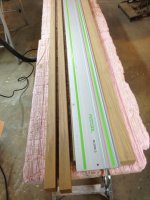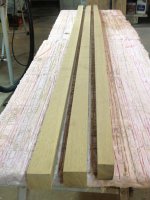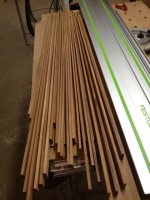JamieMcGannon
Member
- Joined
- Oct 9, 2012
- Messages
- 26
I experienced a problem while ripping a 28" long piece of 8/4 hard maple. The T55 really seemed to struggle to cut the board and was really binding on the thickness. The saw shut off once so i let it cool off, reset my track more securely and continued at a very very slow feed rate. It eventually made it through but the burning of the wood was surprisingly bad.
Is this to be expected?
The T55 is less than a year old with very little use and the blade is sharp. This was my first experience ripping hard maple of this thickness.
Thanks,
Jamie
Is this to be expected?
The T55 is less than a year old with very little use and the blade is sharp. This was my first experience ripping hard maple of this thickness.
Thanks,
Jamie




